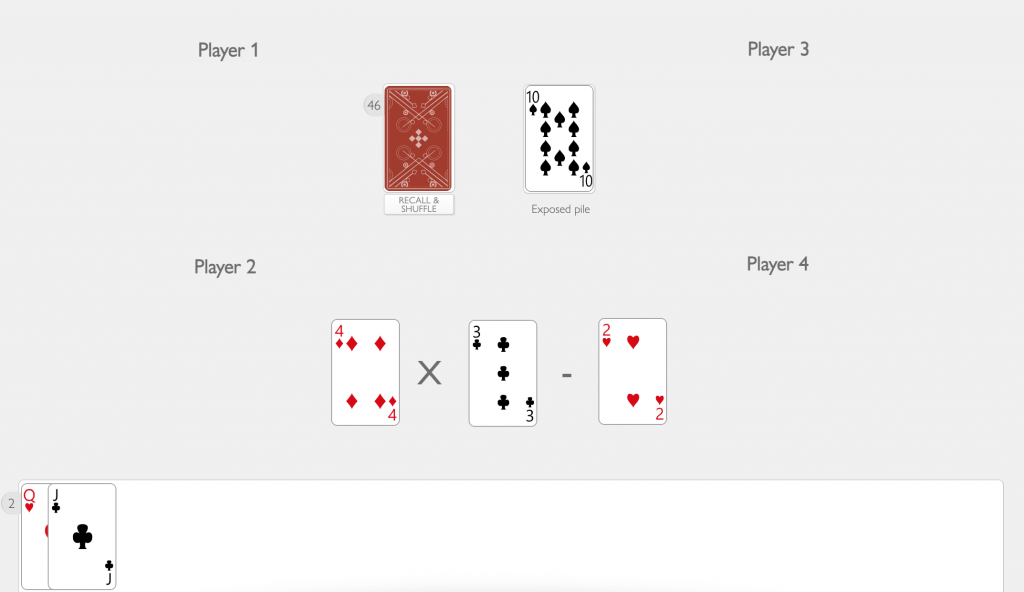Lucky 7s
Primary/Junior (Age 6 – 12)
Curriculum Goal
Primary: Number Sense
- Use the properties of addition and subtraction, and the relationships between addition and multiplication and subtraction and division, to solve problems and check calculations.
- Recall and demonstrate multiplication facts of 2, 5, and 10 and related division facts.
Junior: Number Sense
- Use the properties of operations, and the relationships between addition, subtraction, multiplication and division, to solve problems, including those with multiple operations, and check calculations.
- Recall and demonstrate multiplication facts from 0 × 0 to 12 × 12, and related division facts.
Context
- Two to six students and the teacher will be sitting on the carpet in a circle or on a video conference chat.
- Students should have previous experience with adding, subtracting multiplying and dividing.
- Students should have experience with creating math equations/statements.
Materials
In-person version
- One standard 52-card deck
- Four or more players: two standard 52-card decks
Online version
- On Playingcards.io (file)
- Video conference capabilities
Lesson
- The objective of the game is to work as a team to eliminate all the cards, both in the deck and in individual hands, by using mathematical operations such as addition and subtraction.
- Each player starts with five cards in their hand. The top card from the deck is placed face up in the exposed pile.
- On their turn, each player creates a math statement that equals the exposed card using the cards in their hand.
- They can use up to five cards, and as many operations as they wish.
- Once a player has created their math statement, they place their cards for the everyone to see. Then, the player moves their cards to the exposed pile. The player decides which card to leave exposed as the sum or product for the next player.
- If a player leaves a two exposed, they get to eliminate two cards from the deck by placing them in the exposed pile.
- If a player leaves a ten exposed, then the order is reversed.
- If a player leaves the lucky seven wild card exposed, the next player can make up a desired result for their math equation.
- After every turn, players take new cards from the deck to ensure they always have five cards in their hand.
- If a player cannot make the target number, they can request a specific card from the other players. Players can continue requesting cards until they can successfully create a math equation that equals the target number.
- Once all the cards in the deck are gone, players will need to play with fewer than five cards in their hand, relying even more on the other players.
- The game is finished when no player can make a math statement to equal to the target number.

Look Fors
- What strategies do the children implement to reach the target number?
- Do the children think strategically when requesting a specific card from the team?
- How effectively can children perform each function: addition, subtraction, multiplication and division with single and/or double-digit numbers?
- Can children use different operations within the game?
- Do the children strategically use the advantages associated with special cards (2, 7, 10)?
- How do the children work collaboratively? Do they support one another in creating appropriate math equations?
Extension
- Specify the use of operations for a round (e.g., make it mandatory for players to include multiplication in their math equations).
- Specify the number of cards that must be used to create the math equation (e.g., use at least 3 cards per equation).
- Introduce order of operations (PEDMAS) thinking by combining addition, subtraction, multiplication and division operations to eliminate as many cards from their hand as possible.
- Collaboratively create more rules associated with special numbers in addition to two, seven and 10.
Created by Vanessa Ius. Adapted by The Robertson Program.
Share this lesson
Share on facebook
Share on twitter
Share on email
